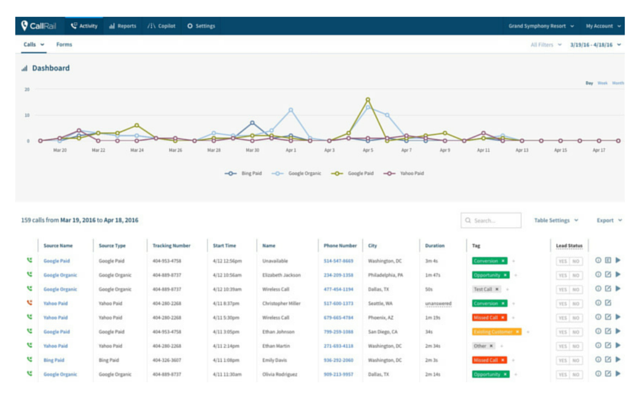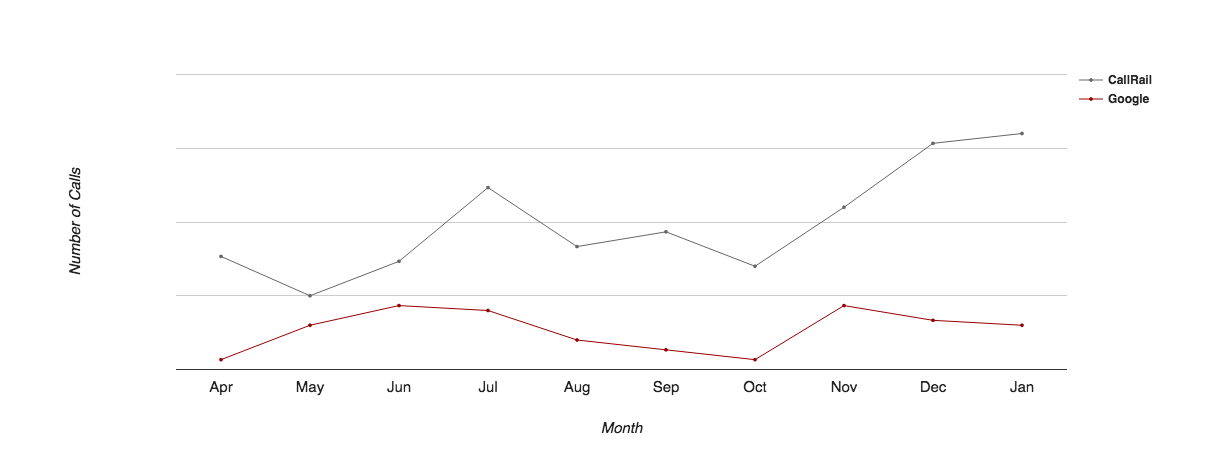Hey, marketers: your data, your dashboards, your reports and your optimization and your conversions and your funnels - ever consider that it’s not that accurate? 😱
Okay, put the pitchforks down - I’m not saying that all marketing analytics is bad and we should return to the days of throwing millions at advertising and hoping that sales numbers go up without accounting for variables or data. I’m an analytics junkie myself, and that thought just scares the heck out of me.

But let me regale you with a story of analytics telling a lie of omission, and how we got around it - then you might be more willing to see things my way.
Exposition
Our client is a local medical practice who accepts patients by appointment. They have an online form for booking a convenient time, and take phone calls as well. They’ve been running paid search on AdWords in their local market for a little while, but the cost for leads are higher than they’d like, and they don’t know if it’s sustainable.
Rising Action
Since the practice receives a number of their bookings by phone, we were looking to identify what role paid search ads played in these calls - so our team turned to CallRail, a call tracking solution that does number swapping on websites.

As a best practice, and for continuity, we setup a tracked number not only for the website, but also for the call extensions being used in AdWords. This way, we’d be able to track all calls from a campaign, no matter whether they came from before or after clicking on the ad.
Climax
When we turned on CallRail to replace AdWords’ native tracking, we discovered something shocking - Google hadn’t been tracking all of our calls!
Indeed, our ads were generating a lot of calls from the extensions - calls that happened without a click, without a website visit, that weren’t getting attributed in AdWords. For whatever reason, CallRail was able to match these dials up to the tracked numbers, while AdWords had been missing them in the reporting. The difference? An average 421% increase in attributed conversions on a monthly basis.

Resolution
Obviously, this exercise turned the CPL (cost-per-lead) discussion on its head. With more accurate attribution data, we saw that paid search had more value than ever realized, and lead cost was right where it needed to be.
Not only that, but we were able to take steps to optimize for phone calls with call-only ads, because of discovering the volume of calls happening on places other than the website. This resulted in a month-over-month increase in call volume for 4 out of the next 5 months.
So what?
Maybe you aren’t a local business who has a hidden source of revenue from your paid acquisition efforts. Maybe you don’t get any phone calls and all of your engagement happens online. Maybe you’re thinking this story is cute, but doesn’t really apply to you.
It does.
We live in an amazing age of access to data, but as marketers, we have to be smart enough to question it. Here’s a few (hard) questions to ask yourself, your team, your agency to audit where you are today:
- Are you betting the future of your company on a single source of truth, or do you have redundancy?
- Are you cross-checking platform reports (MailChimp, Google Analytics, Twitter Ads) against your CRM, your marketing automation, your third-party attribution?
- When was the last time that you checked out your multi-touch attribution, or are you solely relying on first-touch/last-touch methods?
- If you have a sign-up funnel or flow, are you measuring not just abandonment, but also re-engagement?
- If you use forms with database verification, when do your conversion events fire - onSubmit, onSuccess, onClick?
- For your paid acquisition, are your ad and analytics platforms using the same attribution windows/methods? If not, which one are you using to measure ROI?
Analytics is good. Data is good. We should be able to trust our data - trust, but verify.


-AK-148968-preview.png?width=842&height=310&name=1.01-1x1px-Embertribe-(Client-Services)-AK-148968-preview.png)











.png?width=810&height=810&name=TJ%20Jones%20-%20%20CoFounder%20EmberTribe%20(1).png)


%20-%20500x500%20-%20SP%20-%2045.01.png)
%20-%20500x500%20-%20SP%20-%2049.01.png)
%20-%20500x500%20-%20SP%20-%2057.01.png)


.png)